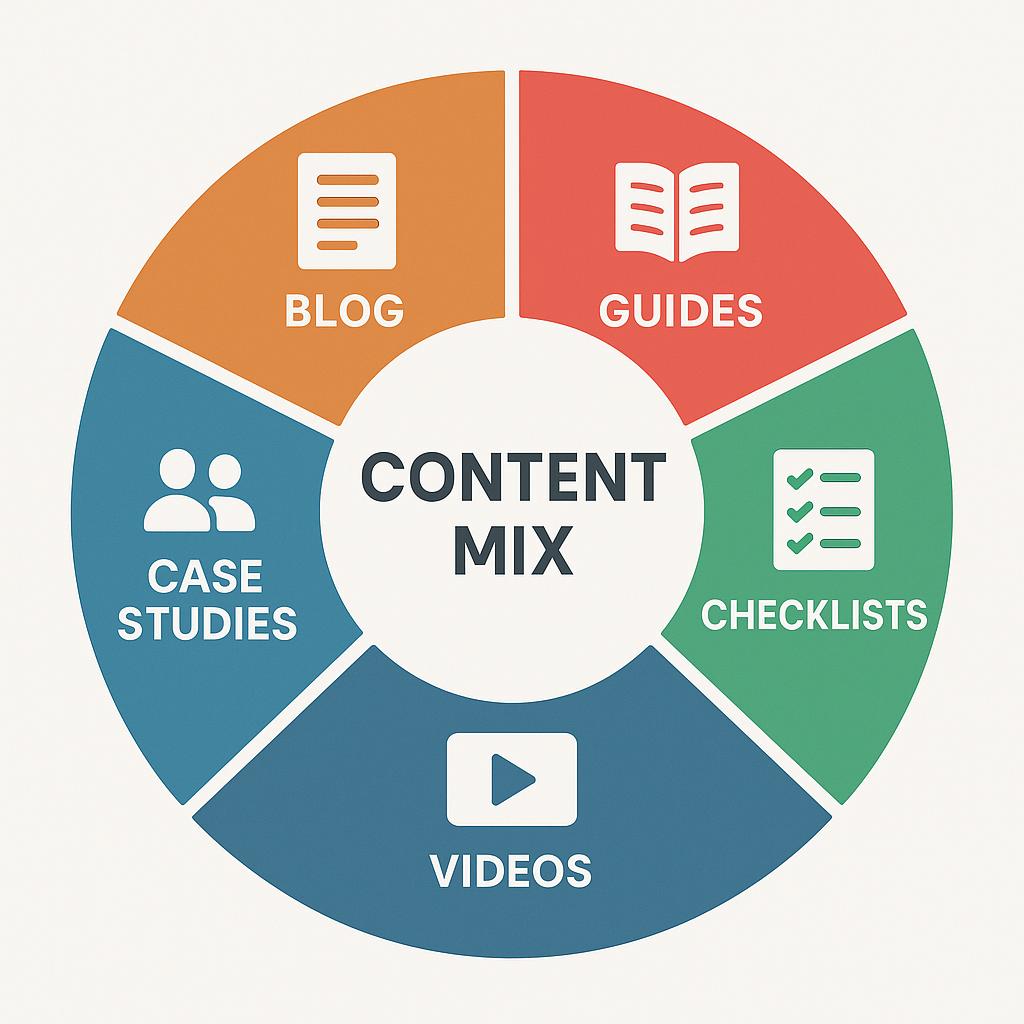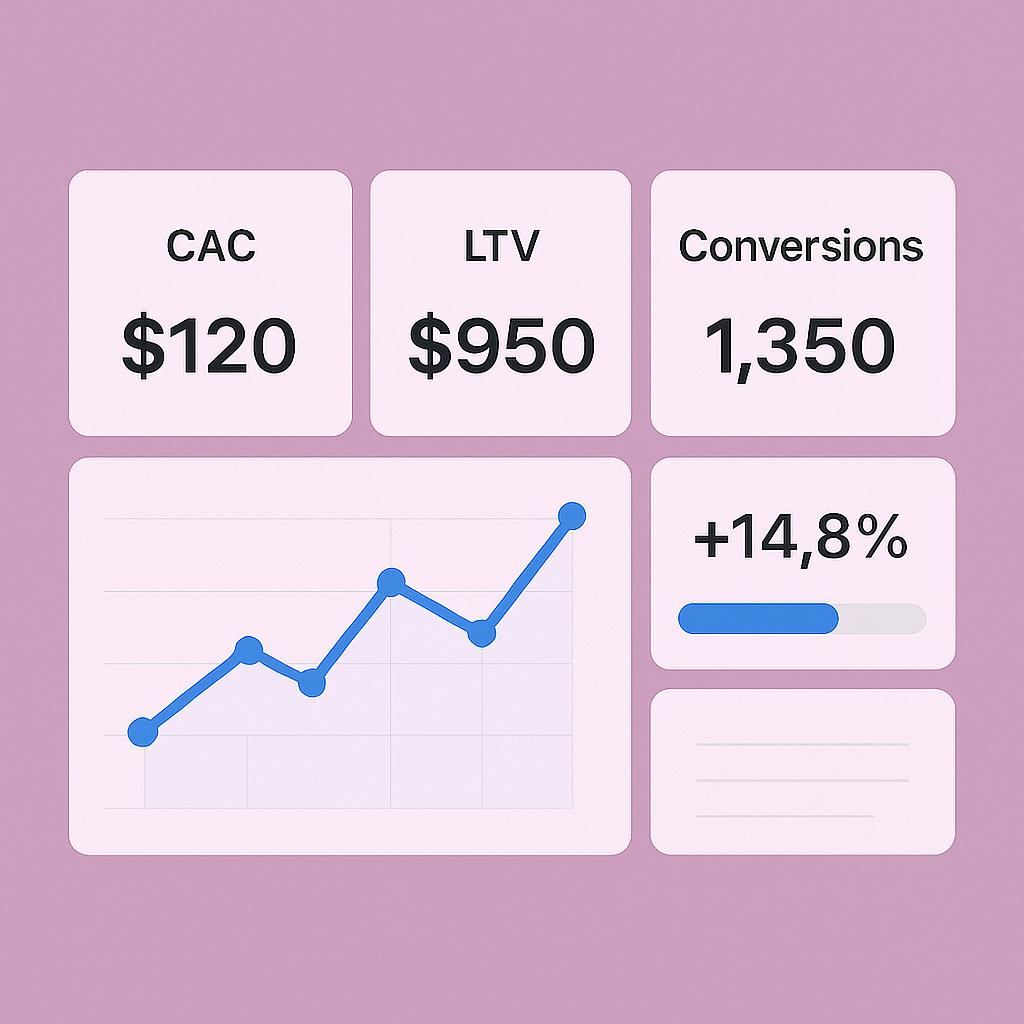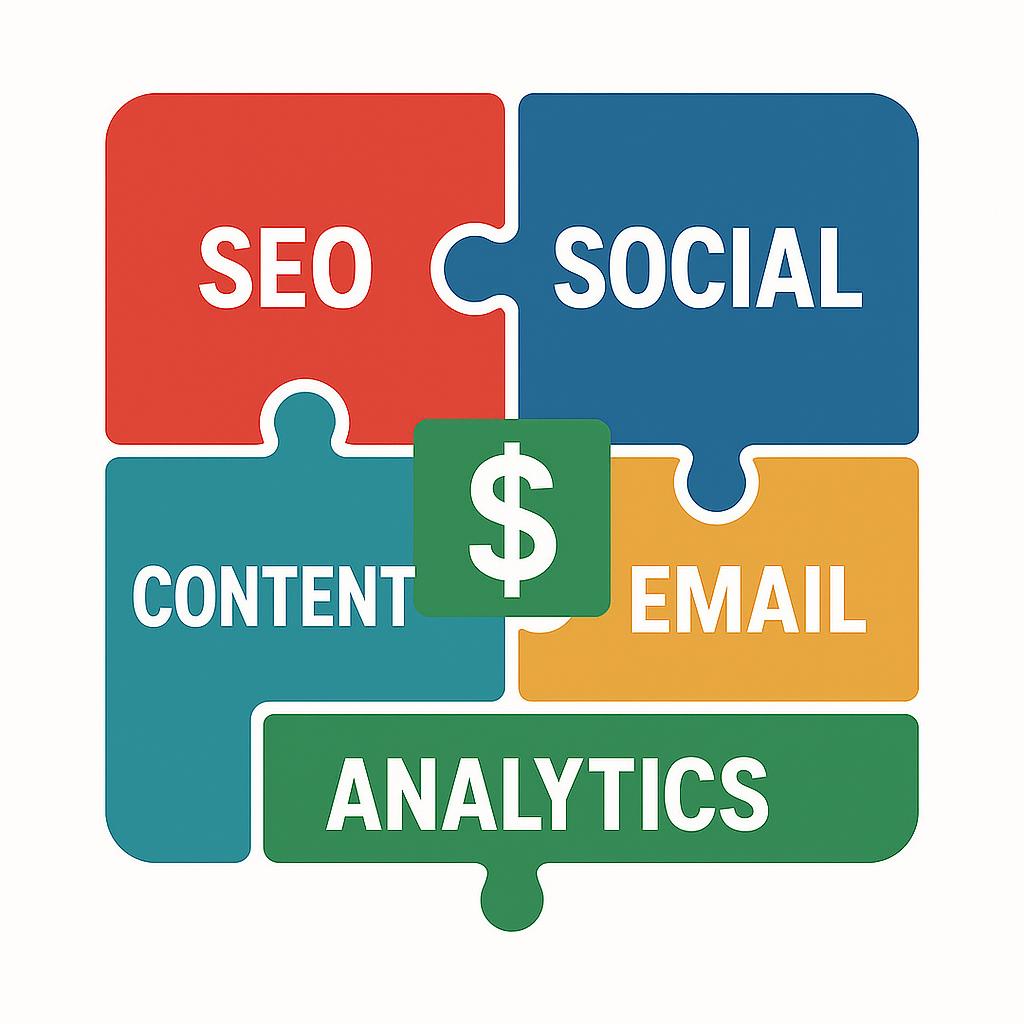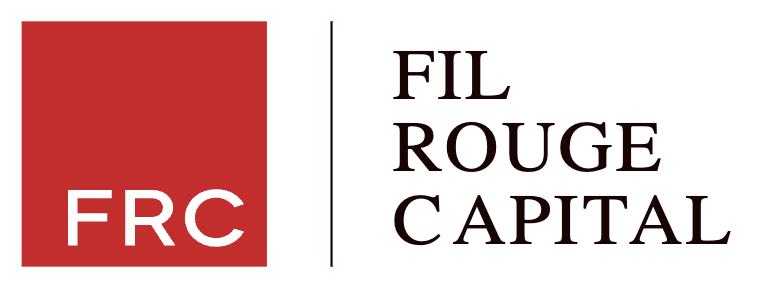A small business marketing agency helps owners punch above their weight.
It assembles strategy, channels, and measurement into a single plan, then executes without wasting budget. Because results matter more than jargon, the right partner focuses on revenue, not vanity metrics.
In practice, this type of agency meets a company where it is. It audits current assets, identifies near‑term wins, and maps out long‑term growth.
As a result, the business sees clearer priorities, cleaner reporting, and steadier pipeline.
What Is a Small Business Marketing Agency
A small business marketing agency is a specialized team that plans and manages growth programs for companies with limited headcount and budget.
Typically, the agency handles research, positioning, website content, SEO, paid media, social, email, and reporting.
It may also guide sales enablement and customer retention. Importantly, a strong partner scopes work to real goals, then delivers on an accountable calendar.
The best agencies simplify choices. They translate data into clear actions, share results in plain language, and keep costs transparent. In short, they act as an embedded growth arm.
Why Small Businesses Need a Marketing Agency
Marketing rarely fails for lack of ideas. It fails because teams cannot focus, ship, and measure fast enough. A small business marketing agency solves that by supplying process, tools, and capacity.
Challenges small businesses face:
- Limited in‑house skills across SEO, design, paid media, and analytics
- Budget efficiency demands fewer mistakes and faster learning
- Seasonal swings require flexible staffing, not permanent hires
- Decision makers want accountability and clear ROI
Additionally, small firms compete with larger brands that dominate share of voice. A specialist agency narrows that gap with disciplined targeting and consistent execution.
Services Offered by a Small Business Marketing Agency
1. SEO (including local SEO, SEO research, and link building)
Search optimization is the traffic engine.
A well‑run program improves technical health, content depth, and authority. Consequently, search visibility rises for commercial terms that convert.
Agencies usually:
- start with an audit
- build a backlog by impact and effort
- align content with search intent
- fix crawl issues
- improve internal linking
- track rankings, clicks, and assisted conversions
a) Local SEO
Local buyers often search with high intent. They read reviews, check maps, and call within minutes.
Moreover, businesses benefit from consistent citations and service‑area pages. Industry surveys show local reviews influence buying decisions, so agencies help create policies for timely replies and ethical requests.
b) SEO Research
Keyword research is more than volume. It combines intent, difficulty, and revenue potential. An agency prioritizes terms by funnel stage and builds content clusters that reinforce topical depth.
For tactical planning long-tail keywords often carry clearer intent and lower competition. To organize around them, many teams use a living document that tracks target pages, internal links, and refresh dates.
c) Link Building
Authority grows when credible sites reference quality content.
Ethical outreach, digital PR, and resource pages help earn those links. Meanwhile, agencies avoid risky schemes that can trigger penalties.
Notably, linkable assets like data studies, step‑by‑step guides, and useful calculators attract mentions over time. A consistent cadence of outreach and content updates sustains momentum.
2. Content Marketing
Content answers questions, handles objections, and supports sales conversations.
Strong programs mix formats: blog posts, guides, checklists, short videos, and case explanations.
Style matters as well. Clear, concrete writing outperforms puffery, as shown in this take on storytelling in content marketing.
Teams also track freshness. Evergreen articles earn links and organic traffic for years, while timely pieces capture current demand. A quarterly refresh cycle keeps high‑intent pages competitive.

3. Email Marketing
Email remains a cost‑effective retention and revenue channel. It nurtures leads, drives repeat purchases, and supports product education. Results are less exposed to algorithm shifts.
Effective programs segment by lifecycle stage, interests, and past behavior. They test subject lines, calls‑to‑action, and send times.
Also, agencies help with opt‑in compliance, preference centers, and automation paths for onboarding, re‑engagement, and win‑back.
For stronger conversion, teams audit CTAs and remove friction. A quick review of common CTA mistakes often pays off.
3. Social Media Management
An agency selects platforms based on audience habits and business goals, not hype. Then it builds a posting calendar tied to campaigns, product news, and community engagement.
Measurement matters here too. Engagement, reach, and assisted conversions inform what to scale.
Another thing worth watching is which platforms people use and how that changes over time.
Teams also handle social customer care. Timely replies reduce churn and can turn public complaints into loyalty. As processes mature, they connect social data to CRM records for better attribution.
4. Competitor Research
Competitor research surfaces positioning gaps and content opportunities.
Agencies analyze rivals’ messaging, keywords, backlinks, ads, and pricing. They note what earns attention and where the market is underserved.
Next, they build counter‑moves: new landing pages, differentiated offers, and clearer value props. In B2B especially, firmographic segmentation sharpens those moves by improving targeting and filtering out poor-fit leads.
5. Analytics & Reporting
Agencies set up analytics so tracking is clear and accurate. They create dashboards that show the key numbers leaders care about, such as revenue, customer acquisition cost (CAC), customer lifetime value (LTV), and conversion rates.
Actionable commentary belongs with the charts. A good report explains why something moved and what to do next.
Teams also set up event tracking, UTM governance, and goal definitions. That groundwork turns messy data into dependable insights.

6. Priority Support
Small businesses run lean.
When campaigns hit snags, waiting a week is not an option. Priority support provides faster response times, clear escalation paths, and proactive check‑ins.
Additionally, planned office hours help stakeholders stay aligned. Short, frequent feedback loops reduce rework and improve outcomes.
In many cases, this alone pays for the retainer.
Benefits of Hiring a Marketing Agency
- Strategic clarity tied to revenue targets
- Faster execution without adding full‑time headcount
- Access to specialist tools and paid platforms at shared cost
- Consistent reporting and learning cycles
- Reduced risk through tested playbooks and QA
Moreover, outside perspective helps challenge assumptions. It is easier to cut low‑yield activities when a neutral party presents the data.
As capacity grows, the agency can train internal staff and hand off playbooks.
How to Choose the Right Agency
- Define success metrics and timeframes. Teams that agree on measurement avoid frustration later.
- Review case evidence. Real before‑and‑after examples matter more than pitch decks.
- Assess process. Ask how they prioritize tasks, run sprints, and report.
- Check channel expertise. Match needs to strengths in SEO, paid, content, and email.
- Confirm communication rhythm. Weekly or bi‑weekly touchpoints keep projects moving.
Additionally, brand governance should be explicit. Consistency across web, email, and social is not optional.
Below is a concise checklist to compare candidates.
| Criteria | What to Look For | Why It Matters |
|---|---|---|
| Pricing model | Clear scope, caps on hours, defined out‑of‑scope rules | Prevents surprise invoices |
| Reporting | KPI‑focused dashboards and narrative insights | Drives decisions, not guesswork |
| Technical depth | Proof of SEO audits, analytics setups, QA protocols | Reduces avoidable errors |
| Creative chops | Strong examples of conversion‑focused copy and design | Improves paid and organic results |
| Vertical knowledge | Familiarity with the buyer’s journey in the niche | Shortens ramp time |
| References | Contactable clients with similar goals | Validates claims |
Final Word
Small companies do not need more noise. They need a plan, consistent execution, and clean feedback loops.
A small business marketing agency delivers that structure and turns scattered activity into repeatable growth.
If marketing resources are stretched thin and revenue targets are rising, Stryng can help. The team builds pragmatic roadmaps, ships high‑quality work quickly, and reports on what actually moves the needle. Reach out to Stryng to discuss goals, audit current efforts, and start a focused plan that fits the budget.
Frequently Asked Questions
Q1: How is a small business marketing agency different from a generalist agency?
A specialist optimizes for lean budgets and shorter timelines. It focuses on channels and workflows that create measurable revenue, not broad brand campaigns.
Q2: What should a small business expect in the first 90 days?
Most teams start with discovery, audits, and quick wins. Then they launch core campaigns, set up dashboards, and commit to a testing calendar.
Q3: What budget is realistic for digital marketing services for small businesses?
Budgets vary by industry and goals, but a common range covers content, SEO, and a modest media spend. Clear KPIs help right‑size investment before scaling.
Q4: Can a local marketing agency handle national reach later?
Yes, if it has the research depth, content engine, and analytics chops. A phased approach starts local, validates messaging, and then expands scope.
Q5: How long before SEO shows results?
Technical fixes may lift visibility within weeks. Content and authority gains often take a few months to compound, depending on competition and publishing cadence.
Q6: Is growth marketing different from traditional marketing for small firms?
Growth marketing leans on rapid testing, tight feedback loops, and cross‑channel data. Traditional plans may move slower and emphasize long‑term awareness.
Q7: What should a monthly report include?
It should highlight KPIs, insights, and next steps. A brief narrative that explains causes and actions is more useful than a dashboard alone.
Q8: How can owners judge fit before signing?
A short paid discovery or pilot is a practical test. It shows how the agency communicates, executes, and handles results under real conditions.



